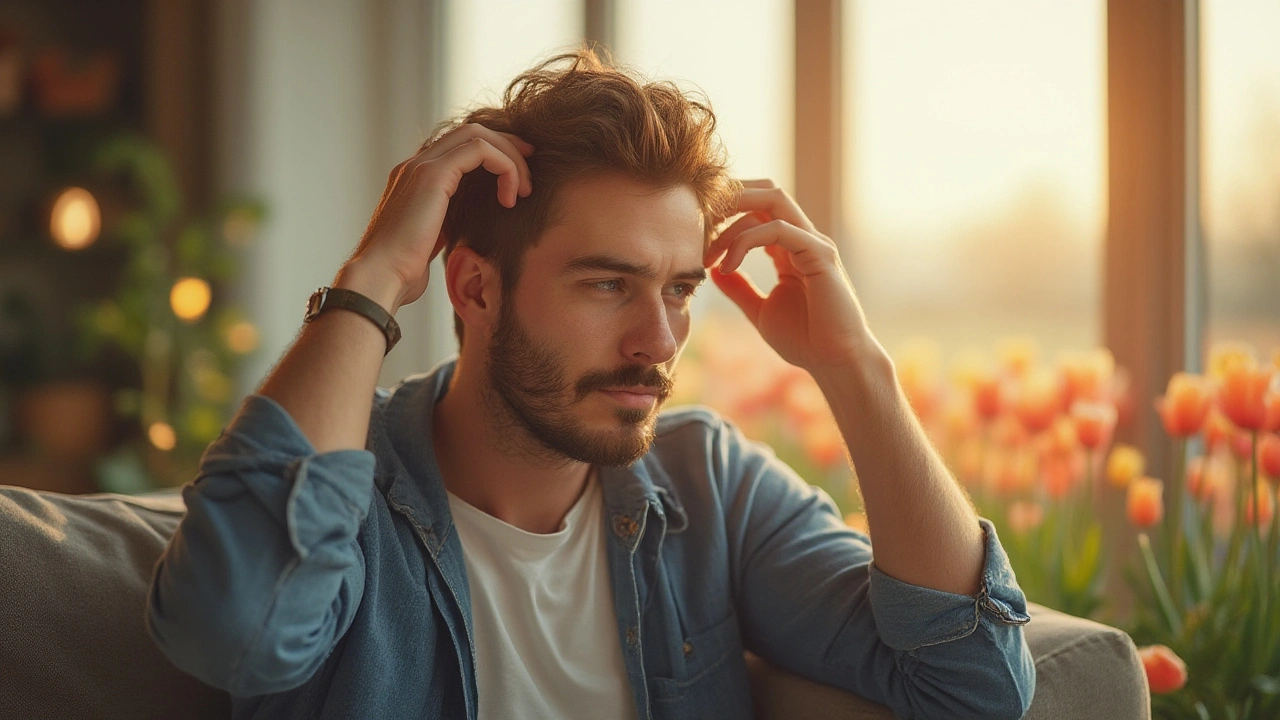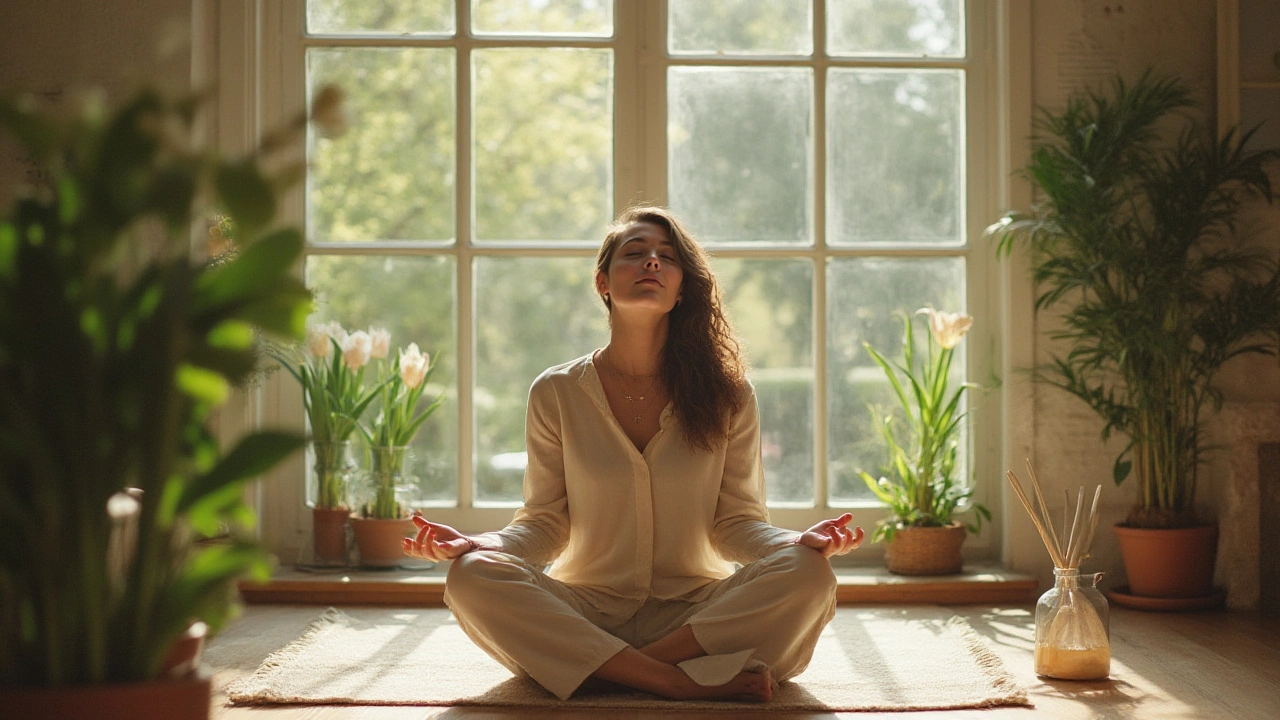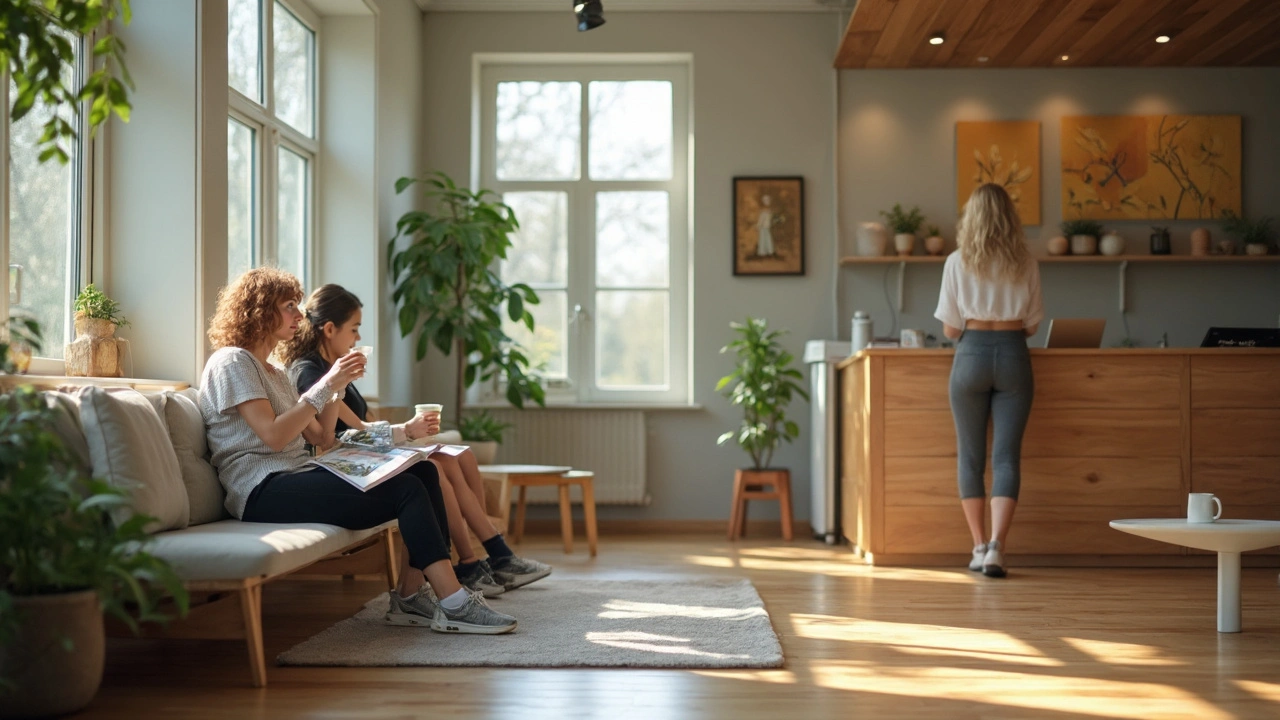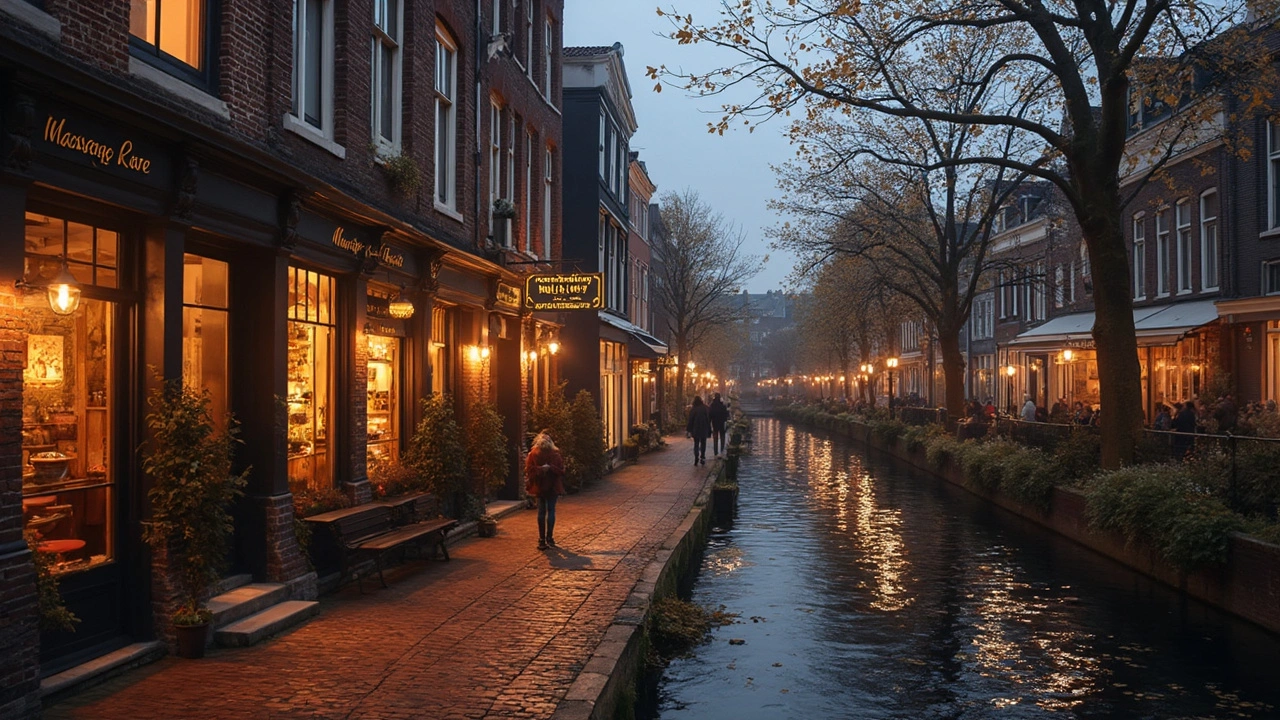Head Massage for Better Sleep: Natural Relief and Deep Relaxation

Why Head Massage Is a Game Changer for Sleep
Ever tossed and turned, staring at the ceiling, just wishing your mind would slow down at bedtime? You’re not alone. Here’s something most people miss: the simple act of a head massage can flip your body’s switch from "fight or flight" to “ahh, sweet sleep mode.” One of the coolest facts is that studies out of the University of California found a significant reduction in both cortisol (our stress hormone) and heart rate in people who received regular head massages. They weren’t just less stressed—they fell asleep faster and stayed asleep longer. Isn’t that what we’re all after?
Let’s talk hormones for a second (don’t worry—no boring lectures here). Your body needs melatonin—also called the “sleep hormone”—to get into a deep sleep groove. Gentle, rhythmic movements on your scalp help your brain release more melatonin and serotonin, two of the best friends your body has for deep rest. It’s like a dimmer switch for your brain: stress starts to fade, calm takes over, and suddenly, counting sheep is so last year.
If you think you have to book a fancy spa every time you want relief, think again. A 2023 public health survey in Amsterdam reported that about 38% of locals do self-massage once a week, with head massage as their top choice for improving sleep and reducing migraines. What’s the science? It’s all about pressure points and nerve endings on your scalp. Using gentle circular movements, you boost blood flow to your head, which helps flush out tension and brings on a wave of relaxation. If you’ve never tried gently massaging the area just behind your ears or at the base of your skull, you’re in for a treat—it’s almost an off button for anxiety.
Now, about those nights when the to-do list won’t turn off, relationships are on your mind, or you’re just… wired. That's when a head massage can work wonders. My partner, Bram, swears his two-minute nightly scalp rub (yes, he’s the one with magic hands in our house) sends me into a deep, drool-on-the-pillow kind of sleep. And I’m not alone; therapists say the effects often last several days after just one good head massage session.
Getting personal: I tried it out for a full month, aiming for 10 minutes of self-massage before bed. My sleep tracker showed a 23% drop in toss-and-turn episodes, and I woke up way less groggy. If you like numbers, here’s a quick look at the difference relaxing routines make:
| Routine | Average Fall-Asleep Time (minutes) | Wake-Ups Per Night |
|---|---|---|
| No massage | 28 | 3.1 |
| With head massage | 13 | 1.4 |
Still think it sounds too simple to work? Experts in sleep disorders are all about practical, low-cost methods. A Dutch clinical review from late 2022 called regular scalp and head massage a “promising complementary practice for chronic insomnia sufferers.” It’s gentle, cost-effective, and you can do it basically anywhere – right before bed, during your lunch break, or even while streaming your favorite show.
Here’s a practical tip: combine a little lavender or chamomile oil with your head massage. These scents trigger the relaxation center in the brain, making the effect even stronger. Just remember—small circles, light to medium pressure, and focus on spots that feel tense or sore.
Even professional athletes use this trick: Dutch Olympic cyclists have a team physio who gives them scalp massages to help them wind down after big races. If it works for them, it can probably help with your next big day too!
What if you wear braids, have curly hair, or just don’t like your scalp touched? No worries. You can still use gentle pressure on your temples, forehead, or above the eyebrows. Some prefer running a soft brush through the hair, which has a similar calming effect and doesn’t interfere with hairstyles.
Let's bust a myth: you don’t need fancy oils, gadgets, or even another person. Your own two hands, clean and relaxed, are usually all you need. Set your phone on silent, close your eyes, and let the slow, gentle motions work their magic. It's not about perfection or memorizing points—just tuning in to what feels soothing and letting your body follow the cues.
Bonus: a well-timed head massage can even help with tension headaches and eye strain from late-night screen time. That’s double the benefit —restful sleep and fewer headaches in the morning.

Exploring Different Head Massage Styles: What’s Out There?
Variety is the spice of life, right? When it comes to improving your sleep with a head massage, you have way more options than most people realize. The most classic version is called the “Indian Head Massage” (also known as Champissage), which focuses on the scalp, neck, and shoulders. This method is a staple in Dutch wellness centers and massage studios, especially around bustling areas like De Pijp or Jordaan in Amsterdam. It’s rooted in Ayurveda and was brought to Europe in the late 1970s, quickly becoming a favorite for anyone seeking deep relaxation.
If you’re in the Netherlands or simply browsing trends, Japanese Shiatsu scalp methods are also surging in popularity. These techniques use rhythmic finger pressure on specific acupressure points that target melatonin and serotonin release. For anyone who gets migraines or tension headaches, this version is a game-changer—many clients feel relief almost instantly.
Maybe you want something simpler? Swedish relaxation massages, offered in many Amsterdam spas, often finish with a short head massage. These focus on increasing blood flow and warming up the muscles around the scalp, which helps quiet your mind and reduce racing thoughts. Ask for “focus on scalp and temples” when you book your next session; most practitioners will know exactly what you mean.
For the DIY crew, there’s the modern gadget route: think scalp massage brushes, handheld massagers that gently vibrate, or soft silicone tools you can use while shampooing in the shower. Research from Utrecht’s Sleep Institute says that even self-massage with a good scalp brush can increase endorphins—tiny bursts of happiness—within five minutes, prepping your brain for rest.
Amsterdam isn’t short on specialty spots. Certain wellness centers around Vondelpark and Haarlem offer Tantric head massage sessions. These blend breathing exercises, gentle touch, and guided meditation. While these might sound a little "out there" for some, the feedback is consistently positive—deep calm, fewer nighttime awakenings, and a more refreshed feeling in the morning.
If you’re traveling or want to experiment at home, here’s a tip: try combining styles. Start with small, circular finger movements (Champissage style) around your temples and hairline, then gently pinch and release your scalp, moving from the crown toward the neck (like in Shiatsu). End by tapping softly all over your scalp with your fingertips, simulating raindrops—sounds odd, but it’s oddly soothing and signals the brain to shift into rest mode.
Here’s a table with the most common styles and their sleep benefits:
| Type | Focus Area | Main Benefits | Avg. Session Time |
|---|---|---|---|
| Indian Head Massage | Scalp, neck, shoulders | Relaxes nerves, reduces insomnia | 25-30 min |
| Shiatsu Scalp Massage | Acupressure points on scalp | Boosts serotonin and melatonin | 15-25 min |
| Swedish Massage (with scalp focus) | Whole body + scalp finish | Promotes full-body relaxation | 50-60 min |
| DIY/Brush Massage | Scalp (self-massage) | Easy, portable, daily use | 5-10 min |
Don’t forget that a little experimentation goes a long way; different styles work better for different people. If you’ve got very sensitive skin, consider using a hypoallergenic oil or just keep it dry until you know what your scalp likes best. And remember, most of these methods are very beginner-friendly. You don’t have to have perfect technique to see the benefits for your sleep routine.
One other trend I love: couples’ head massage. In some Amsterdam wellness workshops, they’ll show you and your partner how to give each other relaxing scalp treatments, helping you both unwind together. It isn’t just romantic—it fosters oxytocin, the “cuddle hormone,” which also plays a big role in restful, healing sleep.

Head Massage in Amsterdam: How to Book, What to Know, and Staying Safe
If you want more than just self-massage, you’re in luck: Amsterdam is packed with wellness centers, spas, and even small neighborhood salons where you can add head massage to your routine. The easiest way to find these is by checking online booking platforms like Treatwell or the websites of local wellness studios. Search terms like “Indian head massage Amsterdam” or “scalp massage sleep” bring up plenty of choices. Many places offer detailed descriptions, photos, and reviews from actual clients—handy if you want to know exactly what you’re getting into.
The going rate for a 25–30 minute professional head massage in Amsterdam is about €35–€60, depending on location and practitioner experience. Some places bundle it with other services, like hot stone or full-body massage, which can make for an extra relaxing treat. Watch for midweek specials—Wednesdays are “wellness deal” days in lots of spots near Leidseplein and De Pijp. Want to save a bit? Ask for student discounts if you’re on a budget; many studios offer them quietly on request.
Booking is usually straightforward. Most studios have an online calendar—pick your time, enter your details, done. If you want a specific style (Champissage or Shiatsu), or need an English-speaking therapist, mention this while booking. Have allergies? Let them know about oils or fragrances you’re sensitive to—most places have unscented or allergy-safe options.
Wondering what to expect when you get there? It’s as laid-back as it gets. You’ll either sit in a comfy chair or lay back on a soft table. The therapist might use a bit of warm oil, or keep it oil-free if you’re stopping by after work. No need to undress—just relax, close your eyes, and let the gentle touch work its magic. A lot of people almost fall asleep within 10 minutes, and it’s totally normal to nod off during a session!
If you’re new, try arriving a little early so you can unwind before things start. Bring a hair tie, just in case, and wear something loose at the collar. If you’re sensitive to scents, let them know so they can skip any essential oils. Keep your phone silent and embrace the break from screens! A glass of water afterward helps flush out toxins and keeps that "floaty" feeling going.
Safety tip: always choose licensed massage therapists. In the Netherlands, professionals register with the CAM (Complementary and Alternative Medicine) register or similar organizations. Check that your therapist’s qualifications are visible in the studio or on their website. If you have scalp injuries, open wounds, or serious skin conditions, hold off and talk with your doctor first before booking a session.
Here’s a simple cheat sheet for comparing head massage with full-body massage in Amsterdam:
| Head Massage | Full-Body Massage | |
|---|---|---|
| Main Focus | Scalp, head, neck | Whole body |
| Best For | Sleep, headaches, quick relaxation | Muscle pain, deep relaxation |
| Length | 10–30 min | 45–90 min |
| Cost Range | €35–€60 | €50–€120 |
| Energy After | Calm, sleepy | Energized or deeply relaxed |
Before you head off to your first appointment, remember: massage is about more than just "fixing" sleep. It’s about tuning in to your body, letting your mind slow down, and giving yourself permission to relax. You might be surprised how big a difference something this simple can make.
Just a few minutes of gentle scalp work regularly can lead to deeper sleep, less tension, and brighter mornings. Try it tonight—even if it’s just tracing circles on your temples before bed. Ready to feel the difference? Go ahead, book that session or give it a try at home. Here's to dreaming sweetly and waking up even better.


